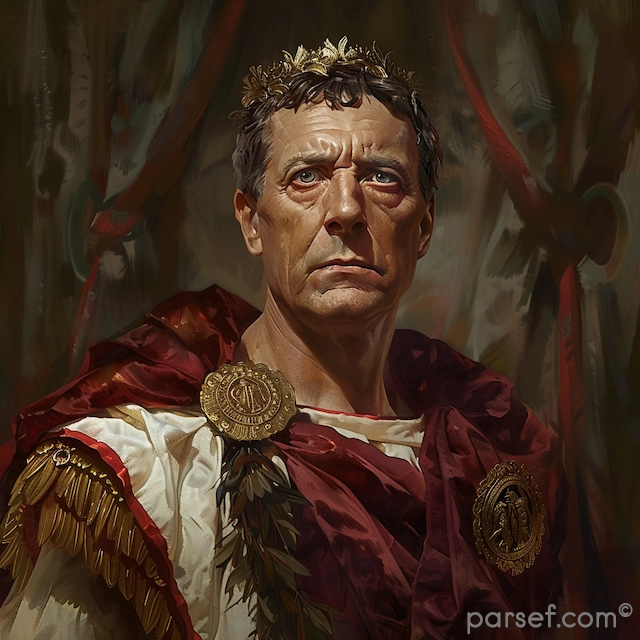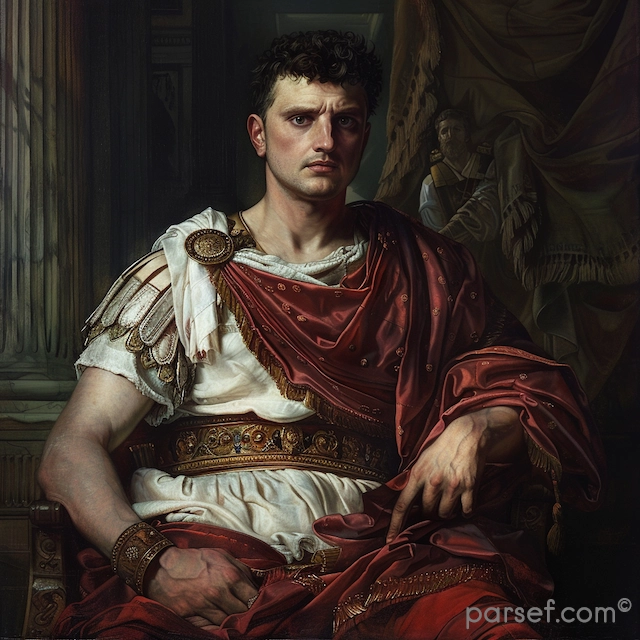Septimius Severus: The General Who Became Emperor and Reformed the Roman Empire

The tumultuous period following the assassination of Commodus saw a rapid succession of emperors, each vying for power in a chaotic political landscape. Among these contenders, Septimius Severus emerged as the ultimate victor. A seasoned general with a reputation for military prowess and political acumen, Severus proved to be a formidable leader who would leave a lasting impact on the Roman Empire.
Born in Lepcis Magna, a Roman colony in North Africa, Severus rose through the ranks of the Roman military. His experience on the frontiers of the empire provided him with invaluable insights into the challenges facing Rome. When the opportunity arose to challenge the illegitimate reign of Didius Julianus, Severus seized the moment. With a loyal army and a clear vision for the empire, he marched on Rome and swiftly deposed the usurper.
Upon securing the imperial throne in 193 AD, Severus embarked on a program of extensive reforms aimed at restoring order and stability to the empire. One of his primary focuses was the military. Recognizing the importance of a strong army, he implemented a series of reforms to improve recruitment, training, and equipment. He increased the size of the legions, raised soldiers' pay, and provided better care for veterans. These measures helped to create a more professional and loyal military force.
Severus also undertook a comprehensive overhaul of the civil administration. He replaced corrupt officials with loyal supporters and introduced new financial policies to bolster the imperial treasury. His efforts to streamline the bureaucracy and improve efficiency were instrumental in restoring confidence in the government.
Foreign policy was another key area of focus for Severus. He embarked on a series of military campaigns to secure the empire's borders. In the east, he successfully repelled Parthian invasions and expanded Roman territory. In the west, he solidified Roman control over Britain and strengthened defenses against potential threats.
Despite his successes, Severus' reign was not without its challenges. The empire faced economic difficulties, and there were growing tensions between the Roman elite and the increasingly powerful military. Nevertheless, Severus managed to maintain control and preserve the empire's stability.
One of Severus' most enduring legacies is the Severan dynasty, which continued to rule Rome for nearly half a century after his death. His sons, Caracalla and Geta, succeeded him as co-emperors, although their relationship was marked by rivalry and ultimately tragedy.
Septimius Severus was a complex figure. A ruthless military leader, he was also a shrewd politician and capable administrator. His reign marked a turning point in Roman history, as the empire transitioned from a period of crisis to one of relative stability. While challenges remained, Severus' reforms laid the foundation for the continued survival of Rome for centuries to come.
Related Posts
The Colossal Footprint: Exploring the Roman Empire at its Greatest Extent
The Roman Empire, a name that evokes images of gladiatorial combat, sprawling aqueducts, and stoic emperors, wasn't just a powerful state; it was a colossal empire that stretched across continents. But how vast was its reach at its zenith? This post delves into the greatest extent of the Roman Empire,...
Read MoreUnearthing History: Julius Caesar’s Artifacts and Their Significance
Julius Caesar, one of the most renowned figures of Roman history, left an indelible mark on the ancient world. His military conquests, political reforms, and dramatic death have made him a central figure in historical and archaeological studies. Although Caesar lived over two millennia ago, numerous artifacts associated with his...
Read MoreSodom and Gomorrah: The Rise and Fall of Two Ancient Cities
Sodom and Gomorrah are two of the most infamous cities mentioned in ancient religious texts, notably the Bible. For centuries, they have symbolized divine judgment, moral depravity, and catastrophic destruction. Their story is told in the Book of Genesis, and echoes of their downfall reverberate through theology, archaeology, and mythology....
Read MoreElagabalus: The Controversial Reign of Rome’s Youngest Emperor and His Religious Revolution
Elagabalus, born Varius Avitus Bassianus, is one of the most enigmatic and controversial figures in Roman history. Elevated to the imperial throne at the tender age of fourteen, his reign was marked by extravagance, scandal, and a radical religious transformation. His rise to power was as dramatic as his subsequent reign....
Read MoreA Journey Through Time: Mapping Ancient Rome and Jerusalem
For centuries, Rome and Jerusalem have captivated historians and travelers alike. These two powerful cities, though geographically distant, were intertwined throughout much of their ancient history. But how close were they? Let's explore maps depicting these ancient cities and their respective empires. The Mediterranean World: A Roman Sea During the height of...
Read MoreBoost Productivity Respectfully: Non-Intrusive Alternatives to Screen Capture Monitoring
Screen monitoring has become essential in modern work environments, particularly with the shift towards remote and hybrid models. Many companies utilize screen capture tools to ensure productivity. But is this the best way to enhance employee performance? Overview of screenshot-based monitoring Screen capture employee monitoring is a popular tool used by managers...
Read More






















